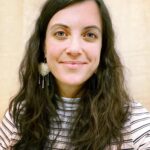More Than the Sum of Our Parts: The Role of Unconscious Stress in Chronic Illness
ERIN HAYFORD, ND
The ultimate goal of any naturopathic medical practice is to identify and treat the cause of the illness rather than mitigate or suppress the expression – the symptoms – of disease. Through our holistic lens, we understand that inherent to our biology is a quest to establish, maintain, and restore health, and, therefore, that disease is the result of a blockage or impediment to this process. In our quest to identify the cause of illness, then, we must understand the nature of these impediments to health and work in order to remove them.
We do this by first exploring a patient’s determinants of health: the inborn, behavioral, social, cultural, environmental, and spiritual factors that can either promote health or, if issues are uncovered here, can serve as obstacles to a person’s healing process. These determinants are “the ‘terrain’ or the soil from which health or illness arises,”1 and just as no house can be built on a shaky foundation, health cannot arise from an uneven terrain. To remove obstacles identified here, Drs Finnell et al advise in their article “A Hierarchy of Healing: Origins of the Therapeutic Order and Implications for Research” that we should “strengthen inborn factors, remove disturbing factors, and establish health-promoting factors,” all of which are accomplished through actions taken directly by the patients themselves and not with any form of medication, herbal or otherwise.1 But how many of us are incorporating this into our treatment plans? And, more importantly, what exactly does this advocacy for self-responsibility look like?
Unrecognized Stress
Let’s explore this question by summarizing the determinants of health as 1 word: stress. This can come in many forms, and we could certainly write pages upon pages about stressors that fall into the categories that determine our foundational health; there are a multitude of inborn, behavioral, social, cultural, environmental, and spiritual stressors that impact us on a daily basis. Acknowledging these as daily stressors is key. While events like divorce, car accidents, and work-related difficulties are often the types of stressors that we uncover in our patient interviews, this is an oversimplification of stress and a limiting view of how it is experienced. Most of us have chronic, daily stressors in our lives that are both insidious and harmful with long-term consequences. Some of these stressors are internally generated (such as negative self-talk or poor boundary-setting, which could be classified as behavioral determinants of health), while others are externally generated (such as systemic oppression and racism experienced by people of color, which would fall under social and cultural determinants of health). Whatever the source, the important underlying factor of these stressors is that they are not viewed as out of the ordinary by the patient; instead, they register as a familiar part of the fabric of their day-to-day lives. This means that patients often do not communicate these stressors to us, and thus, even with our detailed and thorough intake interviews, they are often overlooked.2
Stress, therefore, is not solely a subjective sensation in the body, but is more accurately defined as “a measurable set of objective physiological events in the body, involving the brain, the hormonal apparatus, the immune system, and many other organs.”2 Whether or not the person feels stressed out when these physiological events are taking place relies upon their unique life experiences and how they consciously perceive the inciting event. The field of psychoneuroimmunoendocrinology is dedicated to describing these linkages between our mind and body as part of our whole-body response to stress. While we are just now beginning to understand how these physiological changes translate all the way down to the cellular level, this interaction has been observed for some time: In 1956, Hans Selye wrote in his book, The Stress of Life, “You may feel that there is no conceivable relationship between the behavior or our cells … and our conduct in everyday life. I do not agree.”3
This is crucial to understand because suppressed stress, or stress that we are not aware of, is at the very core of most, if not all, chronic illnesses. As Gabor Maté, MD, writes in his book When the Body Says No, “When we have been prevented from learning how to say no, our bodies may end up saying it for us.”2 There is evidence throughout the literature and empirically of this mind-body connection, and it makes sense: human beings do not “function in isolation from the environment in which they develop, live, work, play, love, and die.”2 How could we? Our health is therefore just as much, if not more so, a product of our emotional and overall psychological reaction to and interpretation of the world around us as is diet, exercise, and other factors. These determinants of health are, after all, the foundation from which healing, health, or illness arises.
Health Consequences
But how does health arise in one person, while illness arises in another, when these 2 people have experienced similar chronic stressors? Stress does not cause disease in and of itself. The emergence of any illness depends on the confluence of many contributing factors, with stress being 1 of the major players. This is clear when we observe the outcome of groups of people who have experienced similar stressors in their lives, or, on the other hand, when we observe groups of people with the same diagnosis and see that there is not a 1-to-1 correlation of a particular stressful event to a particular disease manifestation.2
In the case of multiple sclerosis (MS), for example, the cause of the disease is not fully understood. Genetics do seem to play a role, in part, as there are a few groups of people in which this disease has never manifested. However, genes do not definitively explain who gets the disease or why, as a person can inherit a genetic susceptibility to MS yet not inherit the disease itself. The disease, then, must be triggered by other factors.4 The parable of the 3 men and the elephant comes to mind: Three men, who have never met an elephant before, are blindfolded and then instructed to conceptualize what an elephant is based on the part of the animal they are touching. The man standing at the elephant’s head will define the animal by its trunk, the person at the animal’s side will define it by its leg, and the person at the rear will describe it by the tail. We define our experiences based on our own perspectives and interactions with reality, which provides each of us with a unique worldview. This can result in one person interpreting an event as stressful while another may not, and vice versa.
The path toward chronic illness develops when chronic, daily stress is unrecognized and/or the feeling of being stressed out has become so habituated that it is not seen for what it is. In a healthy stress response, the body becomes activated, discharges the appropriate signals and related chemical cascades, and then returns to homeostasis after the perceived threat has ended, with no negative or long-term impact on the body. In a prolonged or chronic stress response, however, we begin to see the deleterious impact of stress on the body: suppressed immune function, changes in hormone signaling, chronically elevated blood pressure, suppressed digestive function and an altered microbiome, chronic pain including chronic headaches, low libido and infertility, chronic fatigue, respiratory disorders… The list goes on.5 An emerging issue due to the ongoing COVID-19 pandemic is the impact of social isolation and related diminished immune activity, a link that has been demonstrated by many studies prior to the outbreak. Isolation can also impact people in relationships if those relationships are emotionally inadequate and “do not recognize or honor our deepest needs.”2
Emboldening our Patients
It is clear, then, that our job as naturopathic physicians is to move the unconscious to the conscious. We must help the patient become aware of their chronic, daily, habituated stressors and find pathways for resolution. But if the patient is to take action and remove these obstacles to cure themselves, as instructed by Drs Finnell et al,1 how do we empower the patient to take the lead without interfering with the process? In the conventional medical paradigm, there is often the expectation that the doctor is in charge of the healing process and the patient is merely a passive participant. This situation calls for the opposite. It is also important to acknowledge that this conversation may be misunderstood by the patient as being blamed for their diagnosis. In both circumstances, this is where another of our naturopathic principles really shines: Docere, or doctor as teacher: We should approach this topic from an educational perspective, where we embolden our patients to become the authority figure in their own lives and to take responsibility for their feelings, actions, and health rather than continuously and unconsciously reacting to the world around them. When they understand how their repressed stressors are negatively impacting their physical health, with the appropriate support they are then able to make a conscious decision to conduct themselves in a manner that is more congruent with health than disease.
It is crucial to note that external stressors such as systemic oppression and racism, an unlivable wage, and homelessness are structural, community, and cultural changes that must take place. As such, they fall on the shoulders of communities and elected officials, rather than individuals, to address and eradicate.
To treat the cause of illness in our patients is to understand that the chronic, daily stressors related to the interactions in our daily lives affect our biology in myriad ways that are subtle and yet immensely impactful. To be truly holistic in our approach to health and healing, these determinants of health must be appreciated and explored with each of our patients, as they are part of the very foundation from which both health and disease arise. Understanding the intricacies of the mind-body relationship is crucial to promoting the well-being of our patients. To overlook this relationship is to deprive them of an opportunity to become more empowered, self-actualized individuals and of the potential to eradicate, prevent, or lessen the severity of chronic illness. There is no true healing without awareness; the journey toward optimal health begins with aligning with one’s personal truth and stopping at nothing until all obstacles to the core self have been removed.
References:
- Finnell JS, Snider P, Myers SP, Zeff J. A Hierarchy of Healing: Origins of the Therapeutic Order and Implications for Research. Integr Med (Encinitas). 2019;18(3):54-59.
- Maté G. When the Body Says No: The Cost of Hidden Stress. Toronto, Canada: Vintage Canada; 2004.
- Selye H. The Stress of Life. New York, NY: McGraw-Hill; 1956.
- Rosner LJ. Multiple Sclerosis: New Hope and Practical Advice for People with MS and Their Families. New York, NY: Fireside Publishers; 1992.
- Shaw W, Labott-Smith S, Burg MM, et al. Stress effects on the body. November 1, 2018. American Psychological Association Web site. https://www.apa.org/topics/stress-body. Accessed November 26, 2020.

Erin Hayford, ND is a naturopathic doctor who specializes in mind-body medicine. She incorporates this holistic approach into all of her appointments through the utilization of biofeedback, craniosacral therapy, botanical medicine, and homeopathy. She is in the process of becoming certified in Somatic Experiencing® and Holistic Counseling as additional supportive modalities. Dr Hayford is a graduate of Bastyr University in Seattle, WA, and completed her residency training at Sierra Tucson in Tucson, AZ. She now owns and operates Mind Body Maine, located in Augusta, Maine, and offers both in-person and telehealth appointments. Facebook and Instagram tag: Mind Body Maine (@mindbodymaine)










